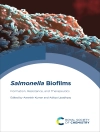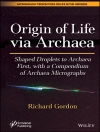Due to various special physiological features and a genome that greatly differs in structure, gene content and organization from other yeasts, Y. lipolytica is widely used as a model organism. With its characteristics, such as the ability to accumulate oil and the high capacity for secretion of proteases and lipases, the yeast is also of great interest for biotechnological applications.
The main topics covered in this Microbiology Monograph are: comparative genomics; mitochondrial genomics and proteomics, including the analysis of the respiratory chain; transposable elements and their activities; non-coding RNA genes, which display a number of unusual and remarkable features compared to other hemiascomycetes; utilization of hydrophobic substrates, of n-alkane and its oxidized derivatives as sources of carbon and energy; ambient p H signalling; comparison of protein families in non-conventional yeasts and S. cerevisiae; and the sulphur metabolism of cheese-ripening yeast.
.
Daftar Isi
Claude Gaillardin, Meriem Mekouar and Cécile Neuvéglise: Comparative genetics of Yarrowia lipolytica.- Stephan Kercher and Ulrich Brandt: Mitochondrial genomics and proteomics of Yarrowia lipolytica.- Serge Casaregola & Gerold Barth: Transponable elements and their activities in Yarrowia lipolytica.- Cécile Neuvéglise, Claude Gaillardin and Christian Marck: Non-coding RNA genes transcribed by RNA polymerase III in Yarrowia lipolytica.- Ryouichi Fukuda and Akinnori Ohta: Utilization of hydrophobic substrates by Yarrowia. Lipolytica.- Sylvie Blanchin-Roland: Ambient p H signalling in Yarrowia lipolytica.- Falk Matthaeus and Gerold Barth: The GPR1/FUN34/yaa H proteinfamily in the non-conventional yeast Yarrowia lipolytica and the conventional yeast Saccharomyces cerevisiae.- Agnès Hébert, Jean Marie Beckerich, Sophie Laudaud and Pascal Bonnarme: Sulphur metabolism of the cheese-ripening yeast Yarrowia lipolytica.












